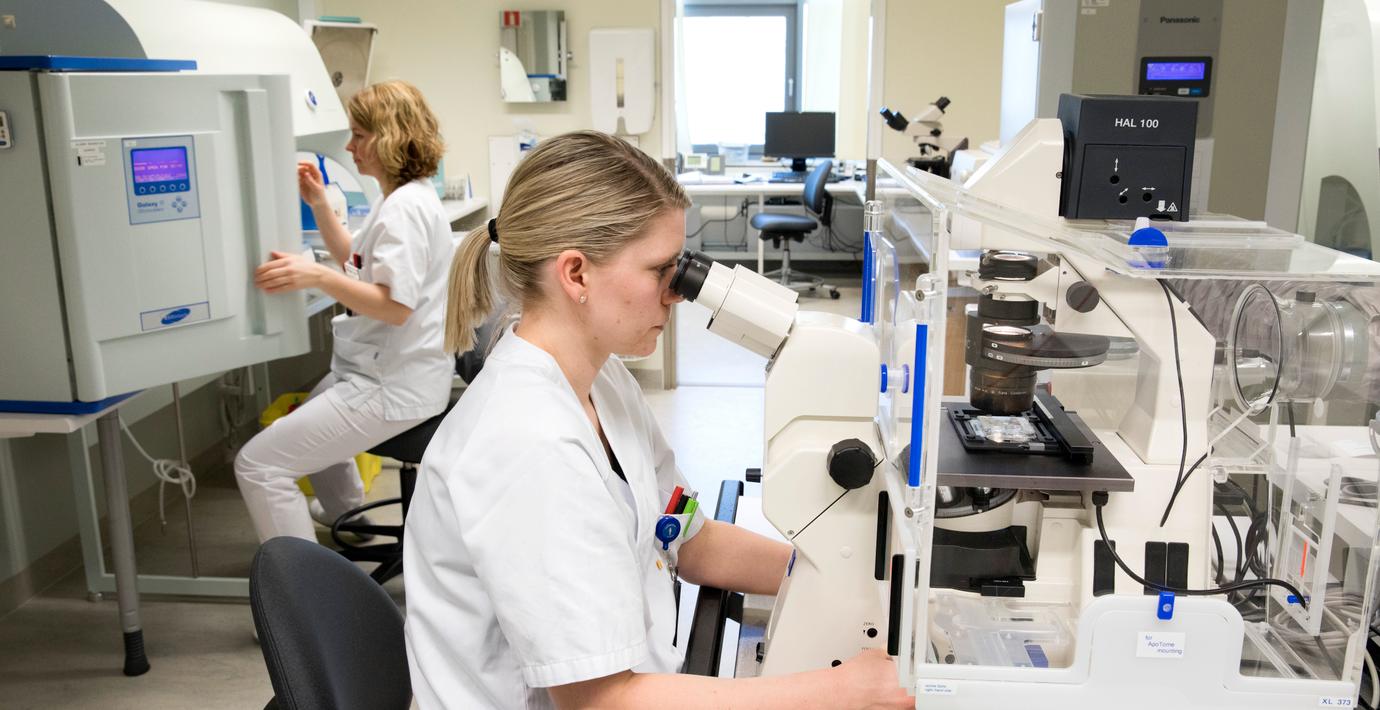
Dyrare IVF-metod ledde inte till fler graviditeter
En ny och dyrare IVF-teknik sägs öka chanserna att bli gravid. Men metoden, som används på flera håll i Sverige, är inte mer pricksäker än billigare varianter. Det visar en ny studie publicerad i vetenskapstidskriften The Lancet, rapporterar TT.
Metoden ”time-lapse” går ut på att embryona ligger i en särskild inkubator där de fotas regelbundet. Det gör att labbpersonal inte måste flytta dem för att se ”hur de mår”. En fördel, enligt marknadsföringen. Men inte enligt studien.
– Det kan låta logiskt men tekniken verkar inte påverka förlossningsfrekvensen, vilket förstås är det viktiga, säger Christina Bergh, professor i obstetrik och gynekologi, till TT.
bakgrund
IVF
Wikipedia (en)
In vitro fertilisation (IVF) is a process of fertilisation where an egg is combined with sperm in vitro ("in glass"). The process involves monitoring and stimulating a female's ovulatory process, removing an ovum or ova (egg or eggs) from their ovaries and letting sperm fertilise them in a culture medium in a laboratory. After the fertilised egg (zygote) undergoes embryo culture for 2–6 days, it is transferred by catheter into the uterus, with the intention of establishing a successful pregnancy.
IVF is a type of assisted reproductive technology used for infertility treatment, gestational surrogacy, and, in combination with pre-implantation genetic testing, avoiding transmission of genetic conditions. A fertilised egg from a donor may implant into a surrogate's uterus, and the resulting child is genetically unrelated to the surrogate. Some countries have banned or otherwise regulate the availability of IVF treatment, giving rise to fertility tourism. Restrictions on the availability of IVF include costs and age, in order for a woman to carry a healthy pregnancy to term. Children born through IVF are commonly called test tube babies.
In July 1978, Louise Brown was the first child successfully born after her mother received IVF treatment. Brown was born as a result of natural-cycle IVF, where no stimulation was made. The procedure took place at Dr Kershaw's Cottage Hospital (now Dr Kershaw's Hospice) in Royton, Oldham, England. Robert G. Edwards was awarded the Nobel Prize in Physiology or Medicine in 2010. The physiologist co-developed the treatment together with Patrick Steptoe and embryologist Jean Purdy but the latter two were not eligible for consideration as they had died and the Nobel Prize is not awarded posthumously.With egg donation and IVF, women who are past their reproductive years, have infertile partners, have idiopathic female-fertility issues, or have reached menopause can still become pregnant. After the IVF treatment, some couples get pregnant without any fertility treatments. In 2018, it was estimated that eight million children had been born worldwide using IVF and other assisted reproduction techniques. A 2019 study that explores 10 adjuncts with IVF (screening hysteroscopy, DHEA, testosterone, GH, aspirin, heparin, antioxidants in males and females, seminal plasma and PRP) suggests that until more evidence is done to show that these adjuncts are safe and effective, they should be avoided.
Omni är politiskt obundna och oberoende. Vi strävar efter att ge fler perspektiv på nyheterna. Har du frågor eller synpunkter kring vår rapportering? Kontakta redaktionen